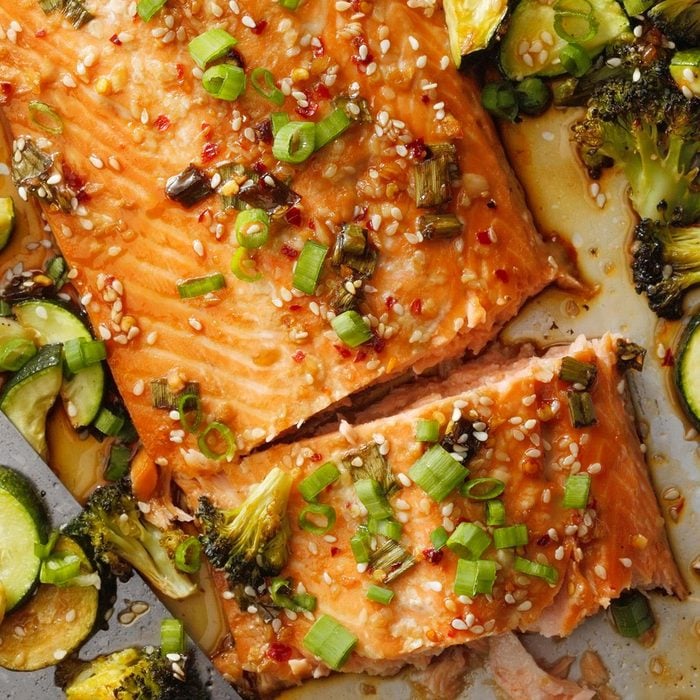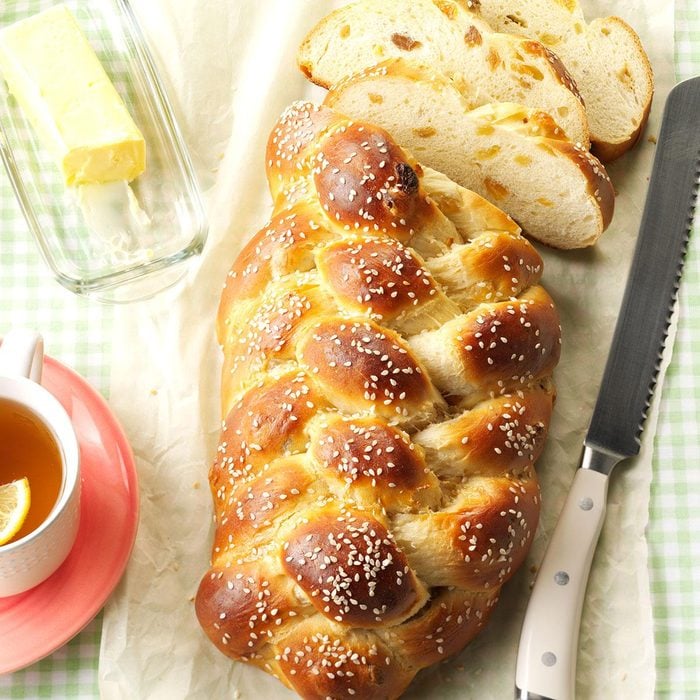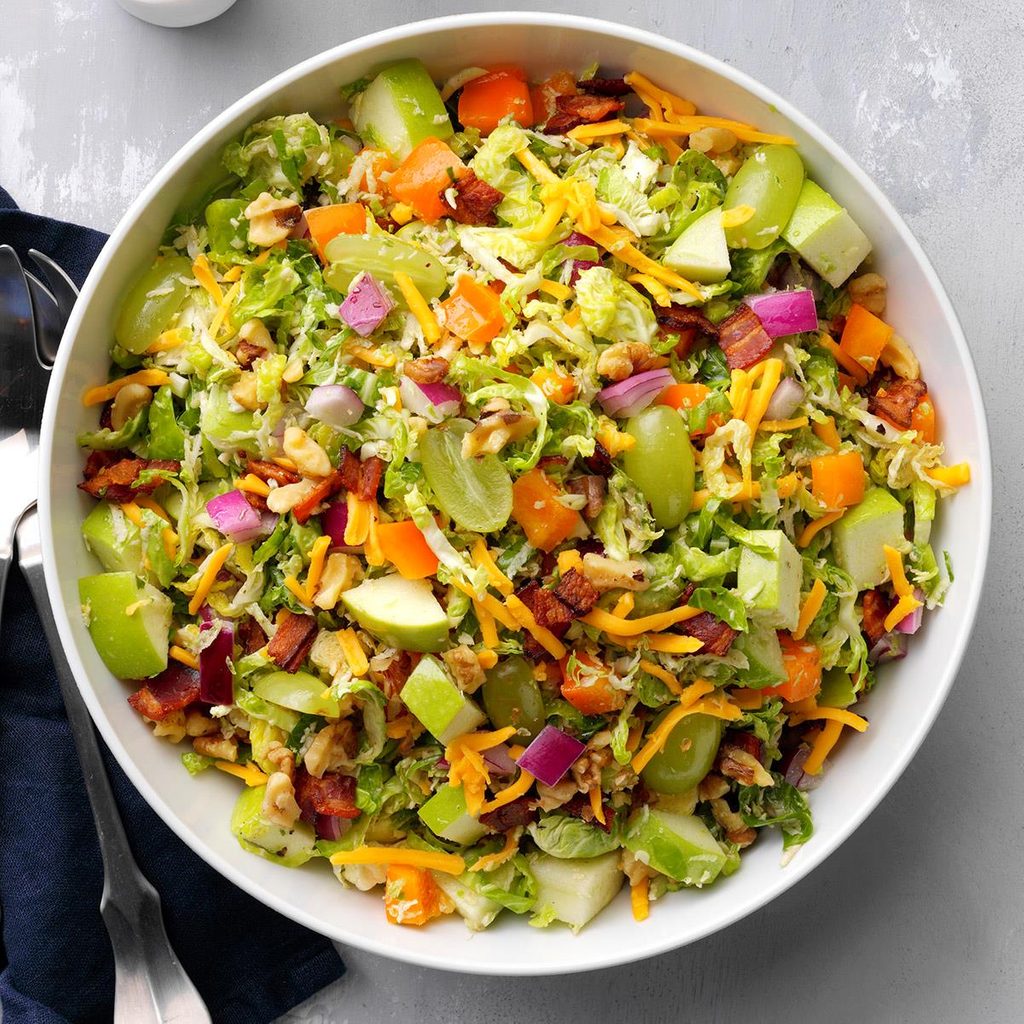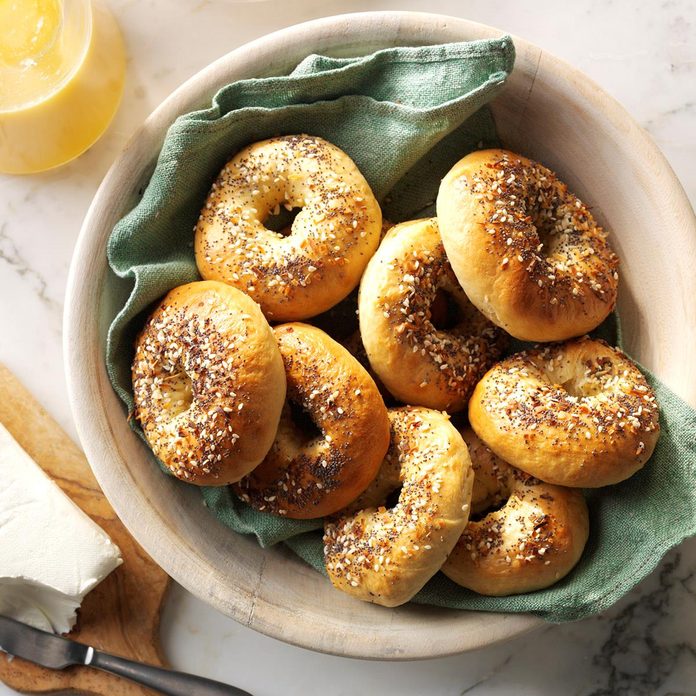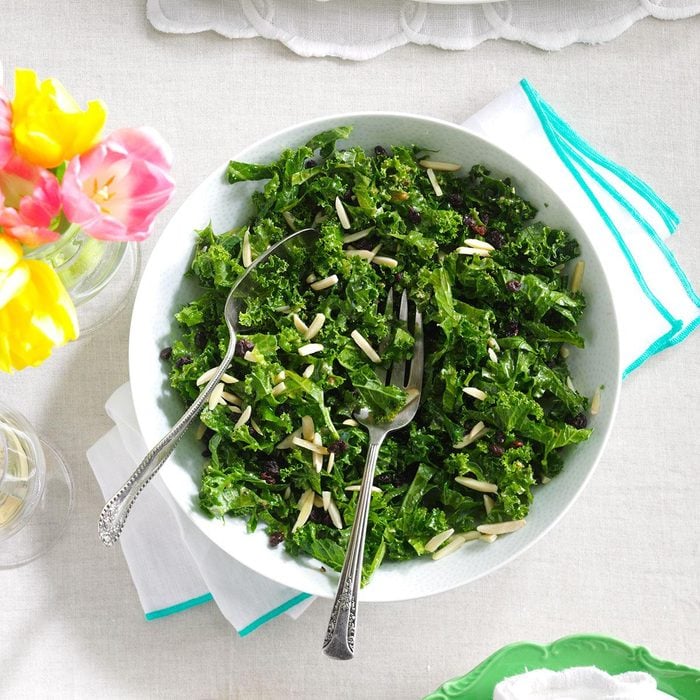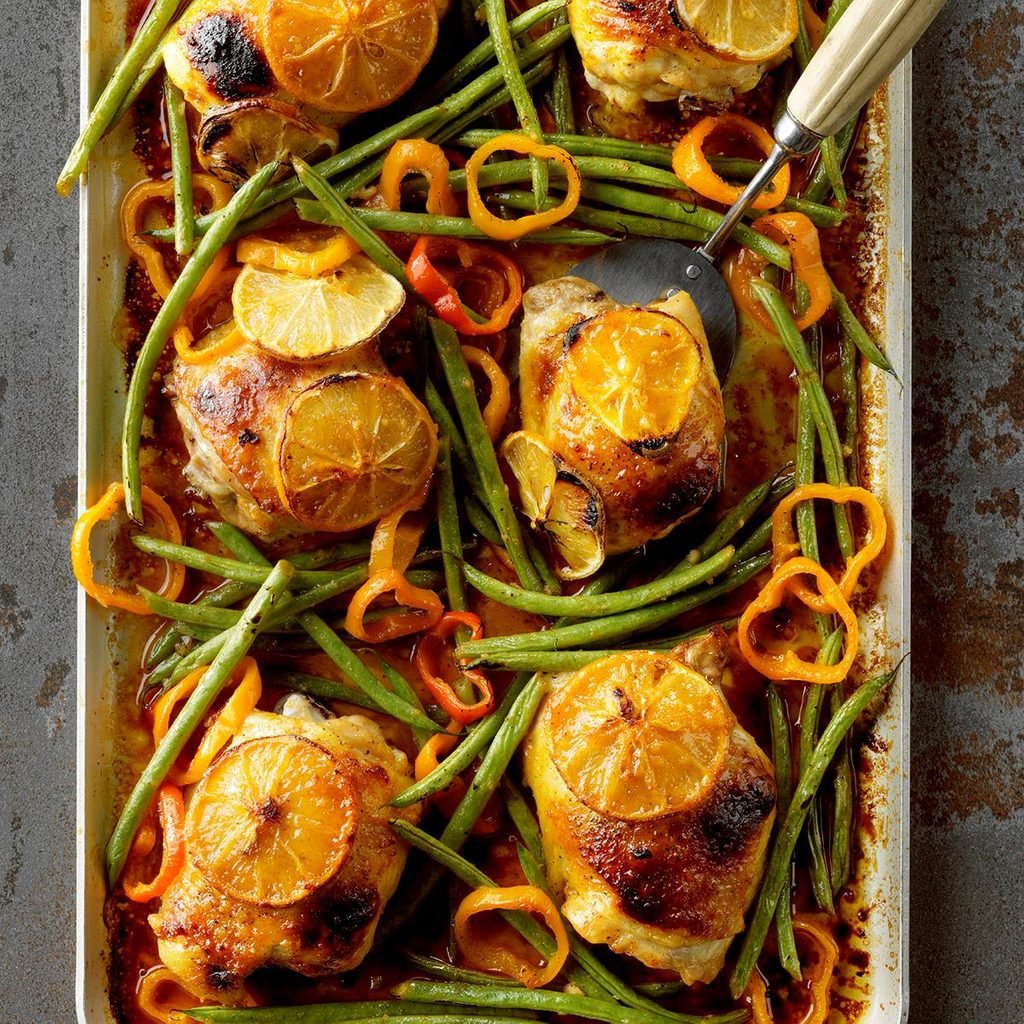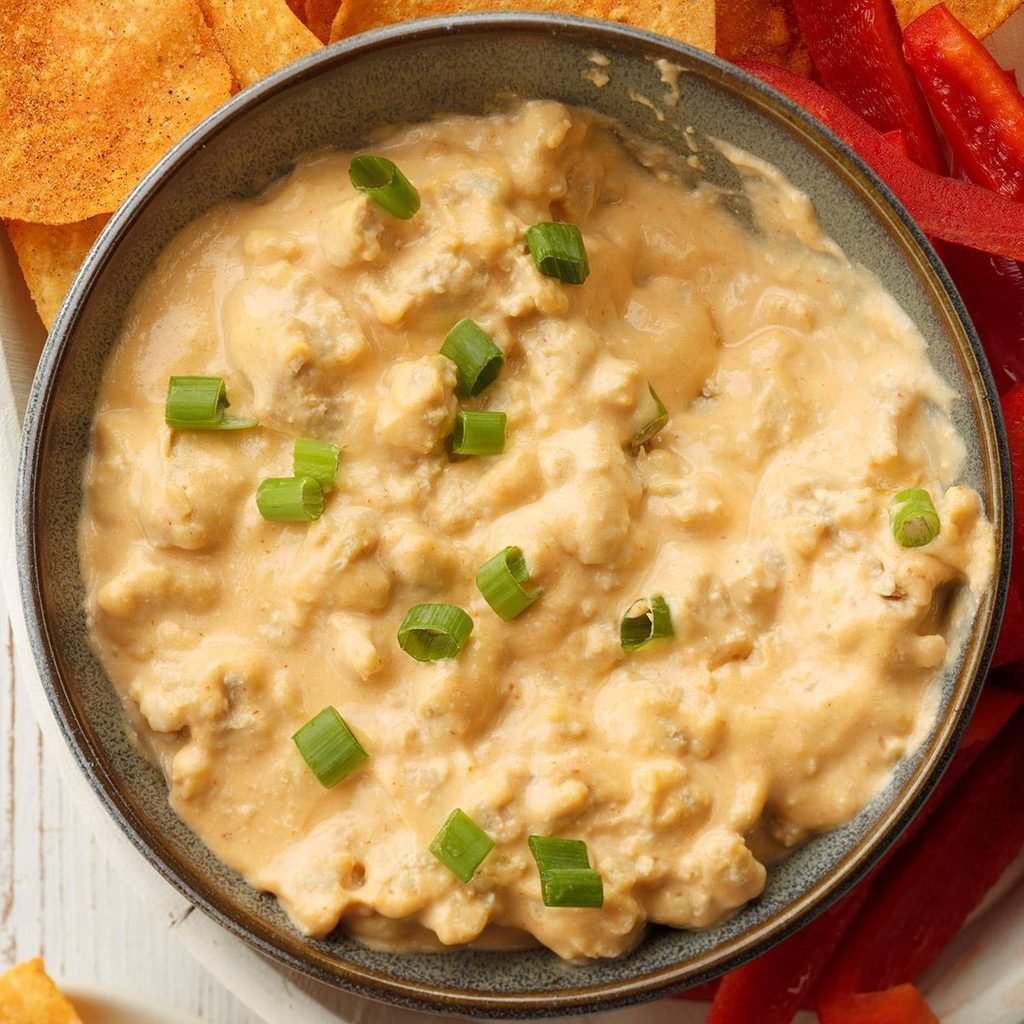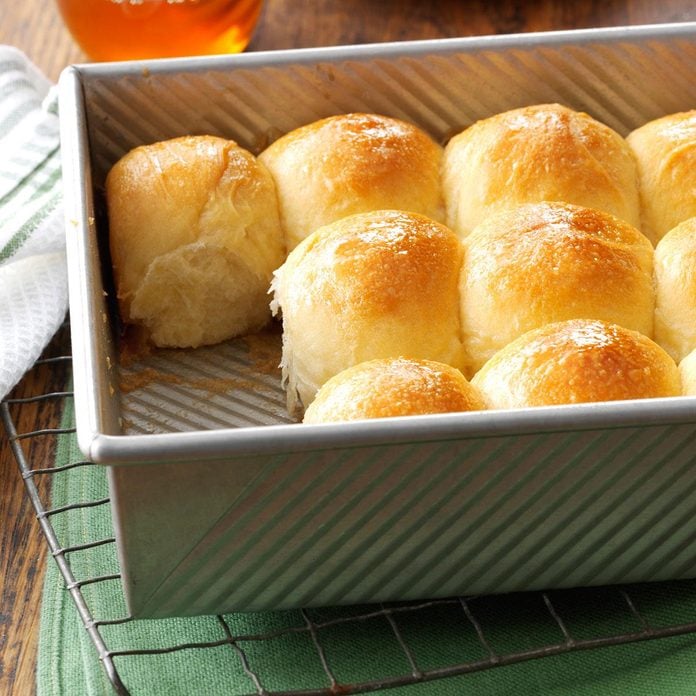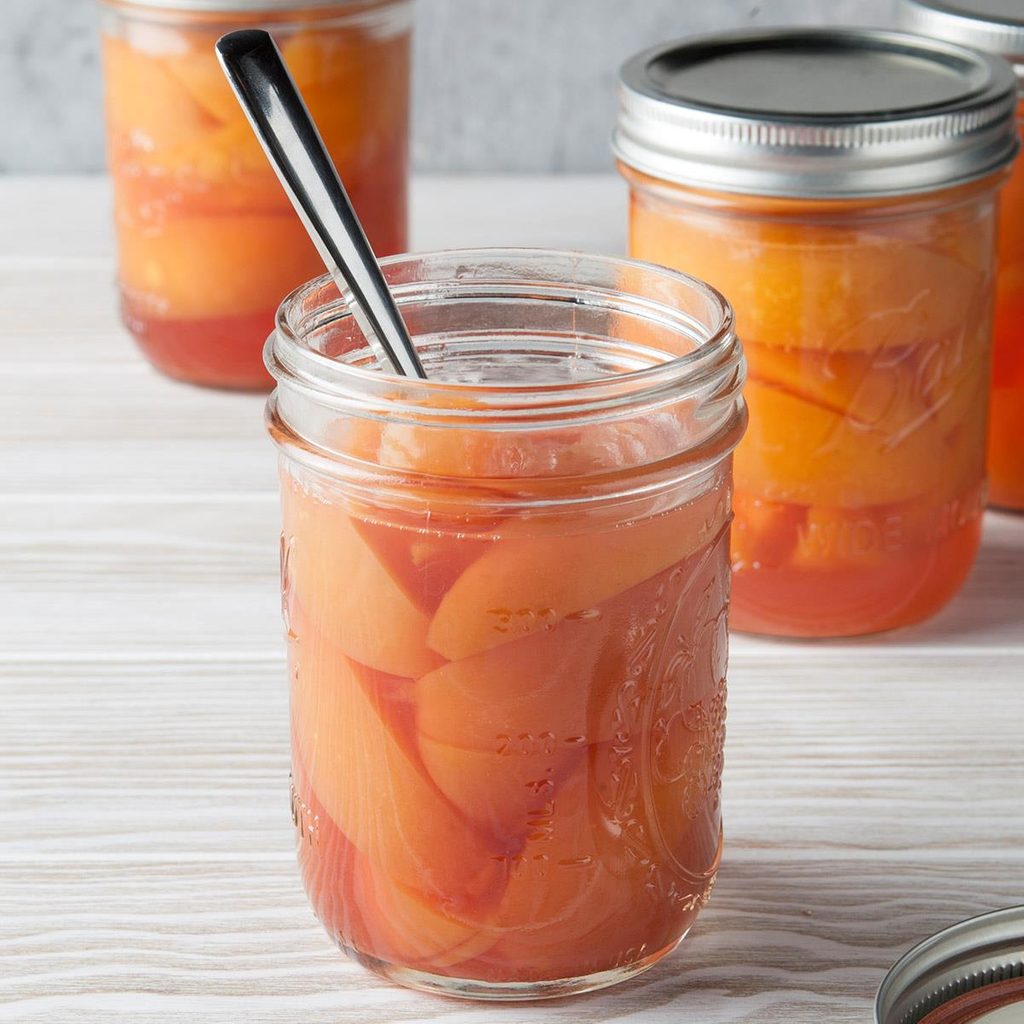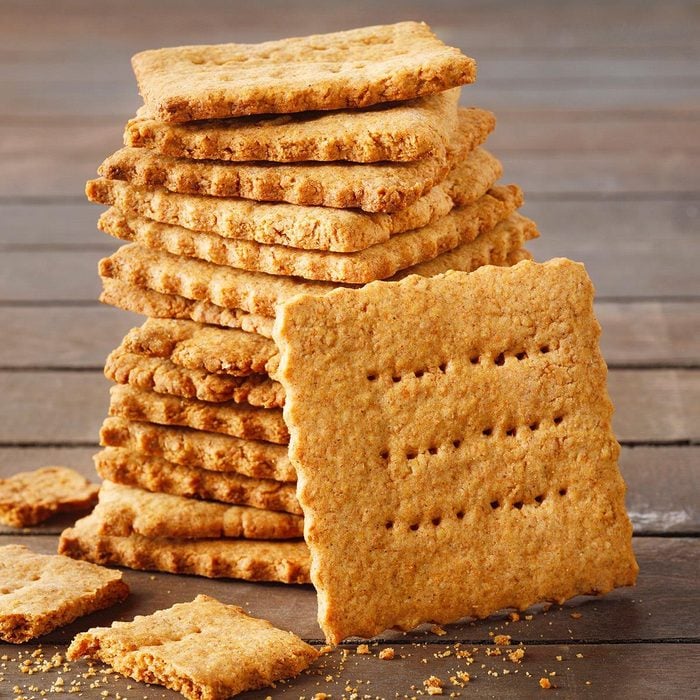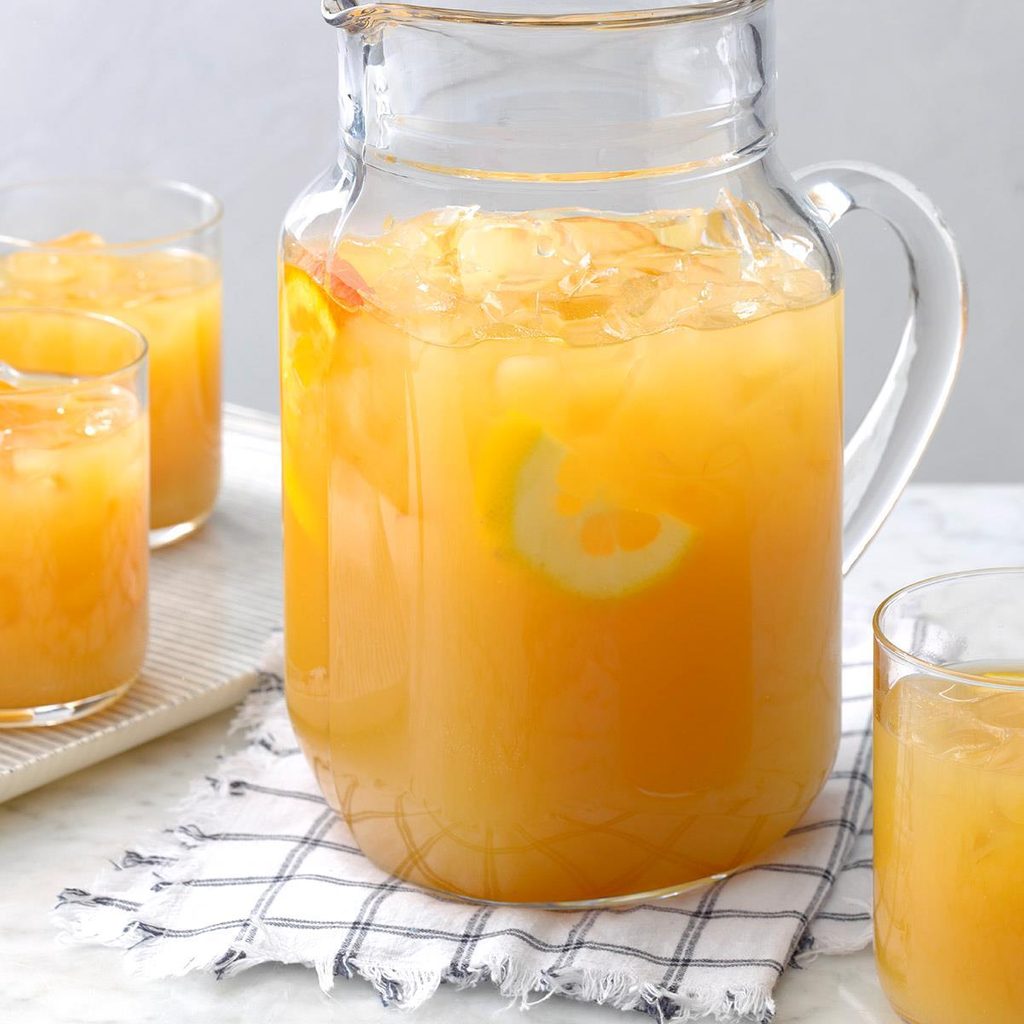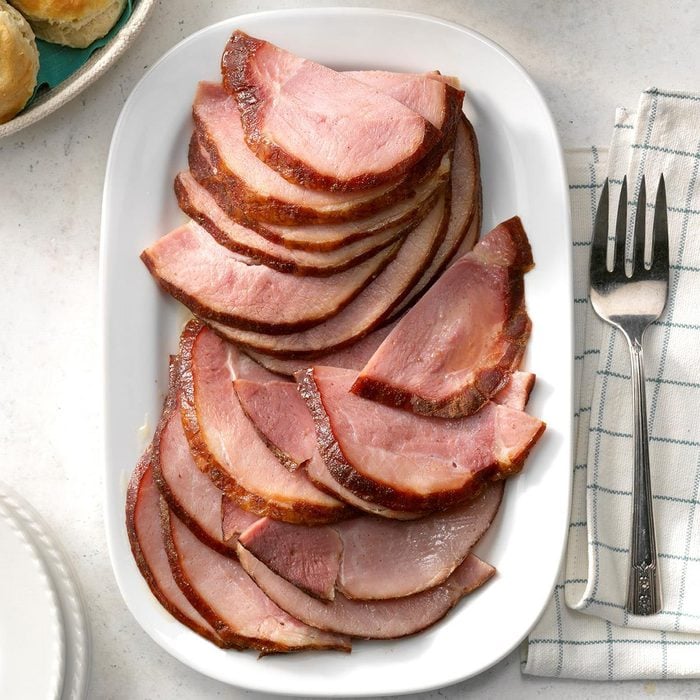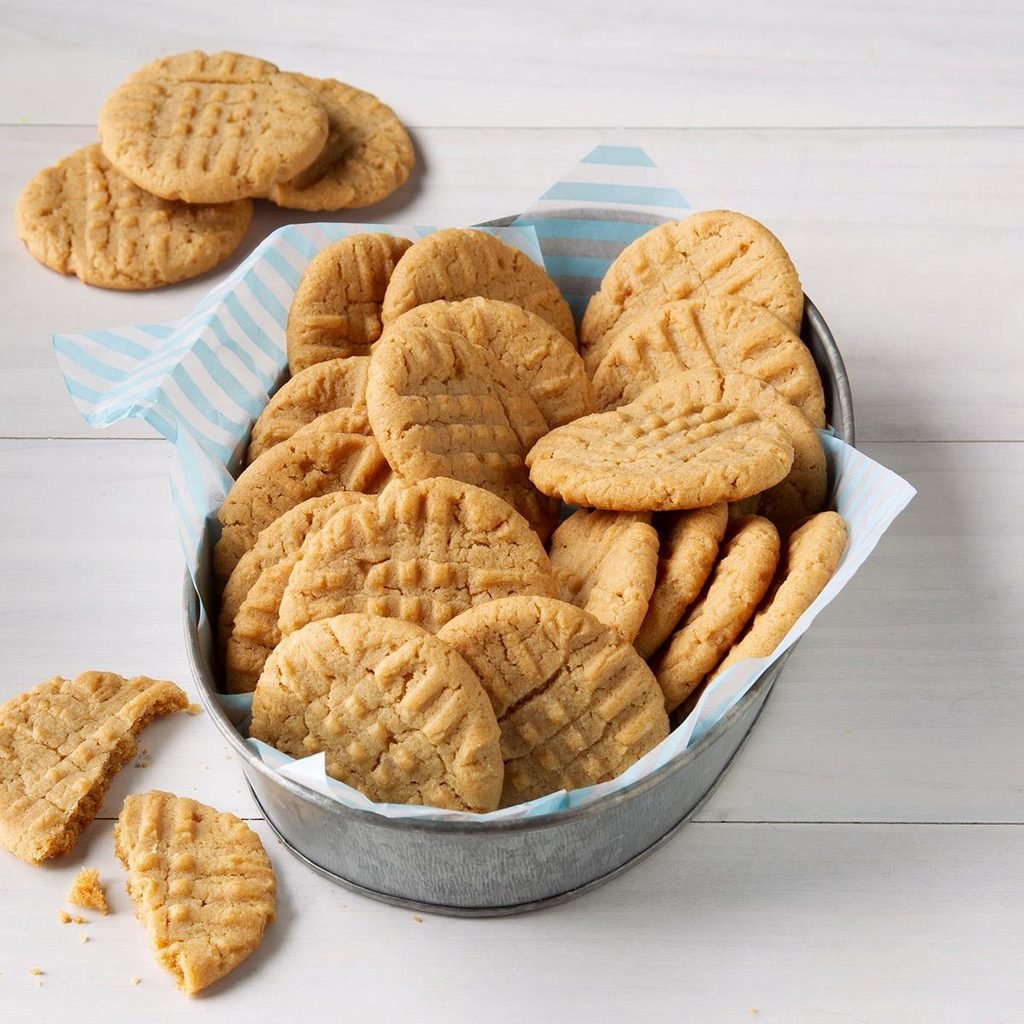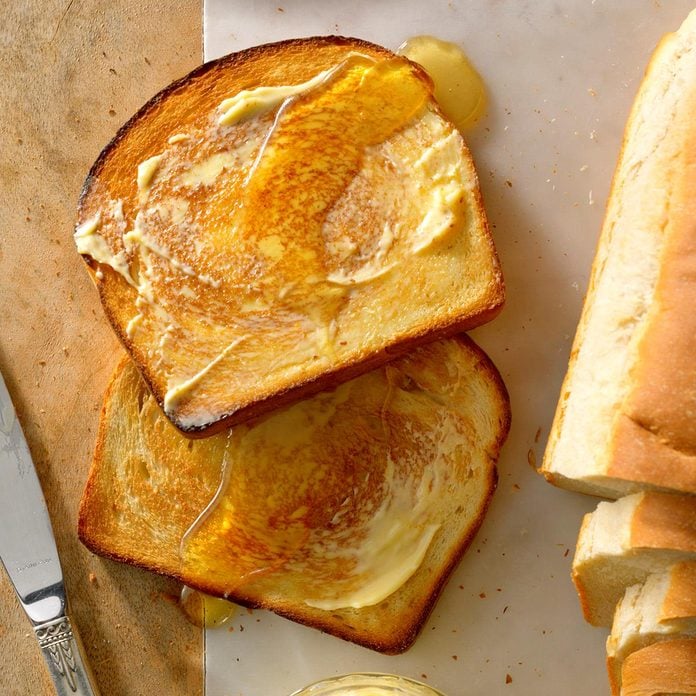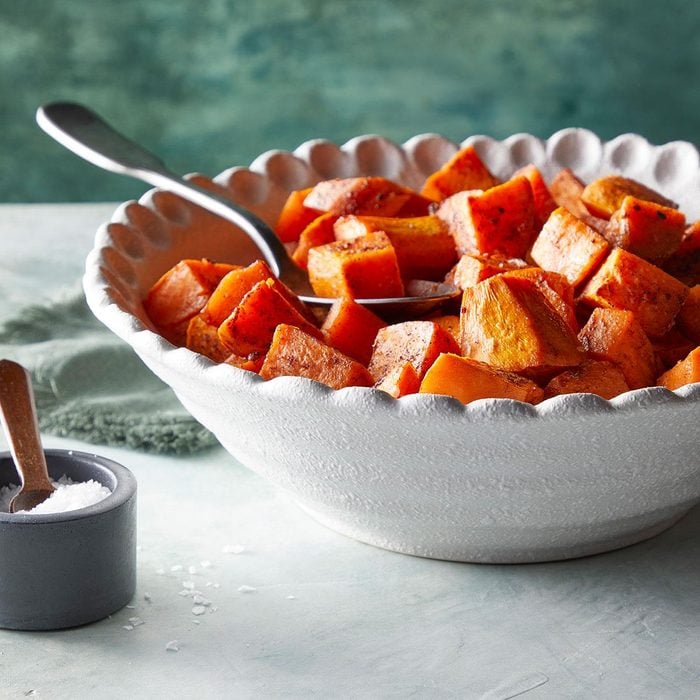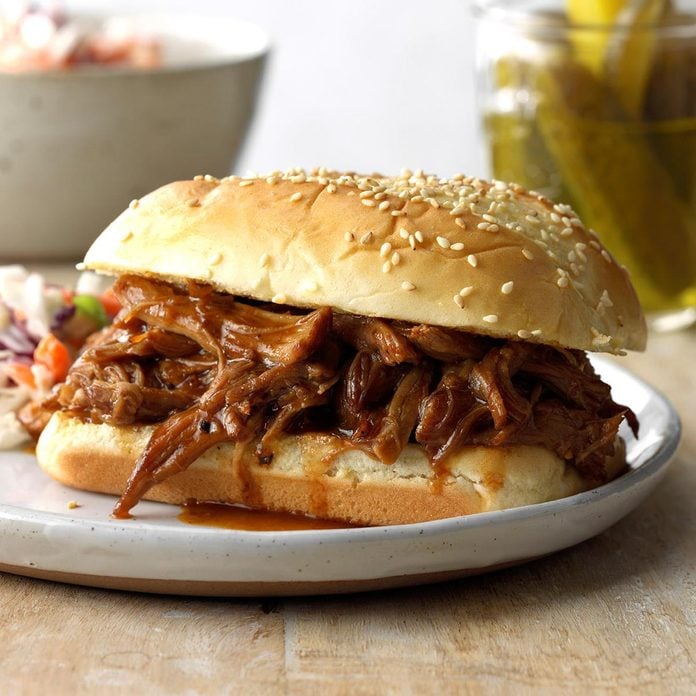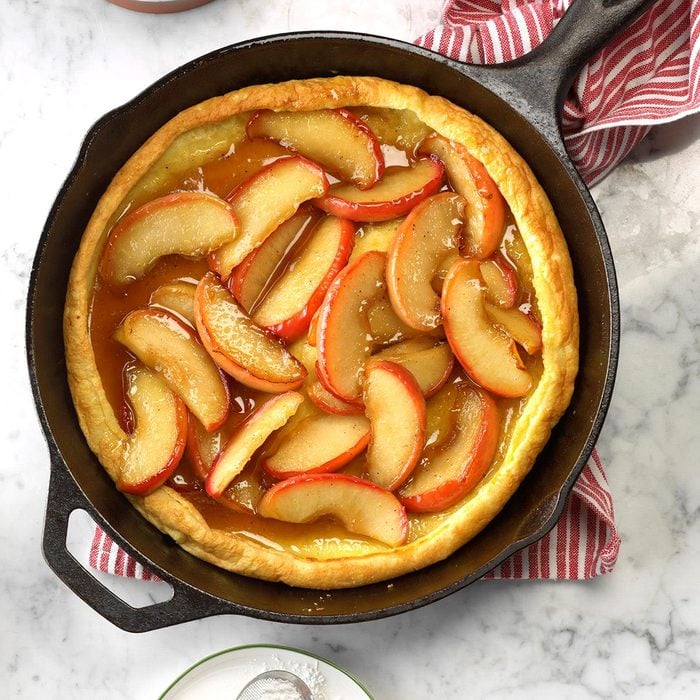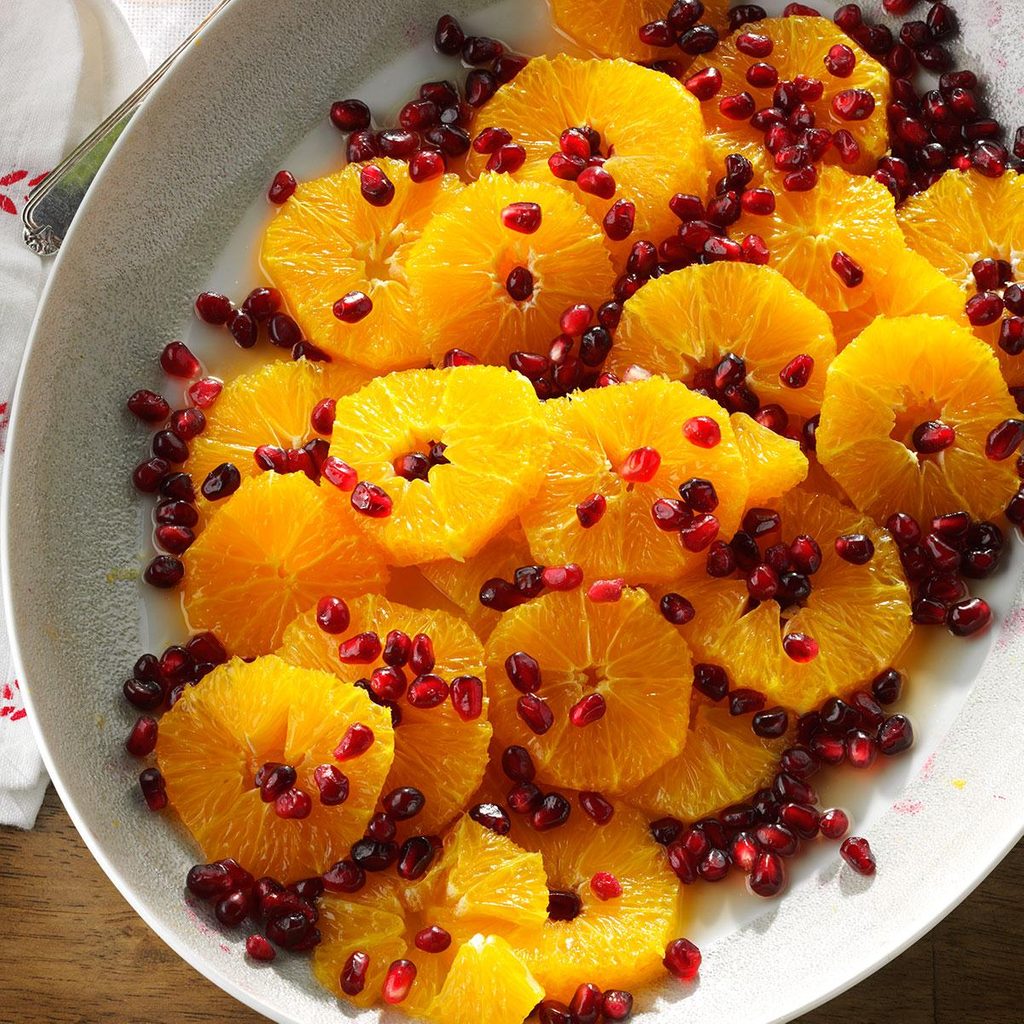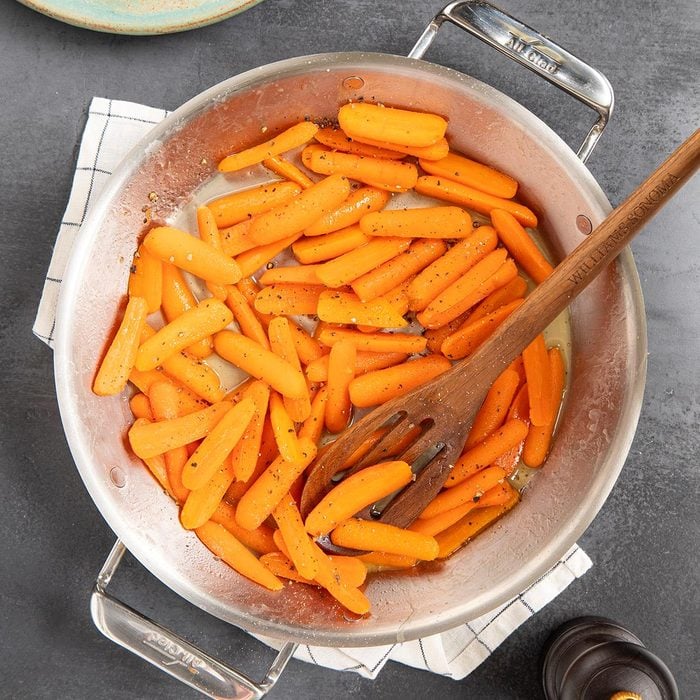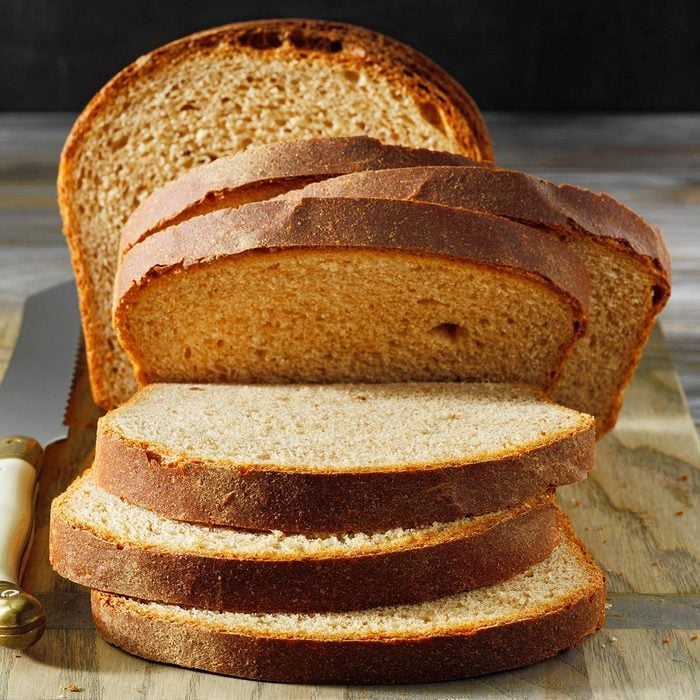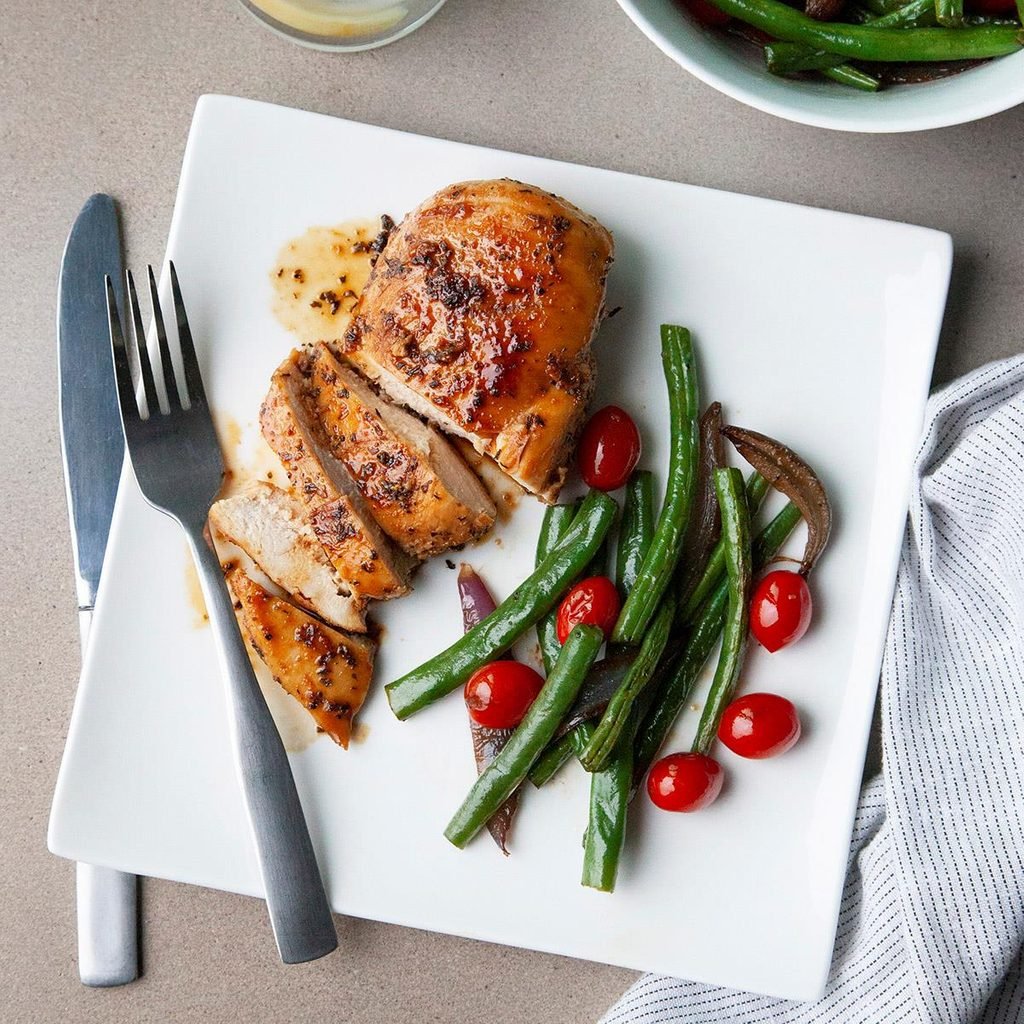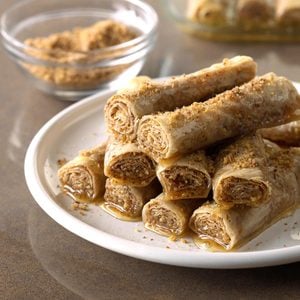 Taste of Home
Taste of Home
This cinnamony treat reminds me of baklava, but with only a few easy ingredients, it's a fraction of the work. My Aunt Adele shared the recipe with me, and I think of her whenever I make it. Make sure to use the
best honey for delicious results. —Sue Falk, Warren, Michigan
Go to Recipe
Rustic Honey CakeWhen my boys were young, they couldn’t drink milk but they could have yogurt. This was a cake they could eat. And it’s one dessert that doesn’t taste overly sweet, which is always a nice change of pace. You can liven up the flavor with different fruits and even different
types of honey. —Linda Leuer, Hamel, Minnesota
In storage, honey can change color and crystallize—but check
does honey ever expires.
Sheet-Pan Soy-Ginger Salmon with VeggiesThis salmon and veggie
sheet-pan dinner is packed with umami Asian flavors and is so easy to make. It's high in protein, omega-3 fatty acids, fiber and so many other nutrients, but it's so delicious! We like to serve it over brown rice or quinoa. —Pamela Gelsomini, Wrentham, Massachusetts
BaklavaMany ethnic festivals are held in my city throughout the year. One in May is the Greek Hellenic Festival. My family enjoys baklava—a traditional walnut strudel. Once you learn how to make baklava, you'll see it's not difficult. Even working with phyllo is easier than you'd expect. Just have your ingredients ready to go and follow the directions on the package. The results are scrumptious and well worth the effort. Make sure you buy a bottle of the best honey before you start! —Judy Losecco, Buffalo, New York
Grilled Nectarines with Burrata and HoneyThe classic caprese gets a sweet makeover with this inspired summer starter.
Burrata, mint and honey are served over nectarine halves—or any stone fruit you like—in this creamy, dreamy dish. It's one of those recipes with honey that's unexpected and so delicious. —Anthony Gans, Hawthorne, California
Honey ChallahOur honey challah is a braided bread that can be made with three, four or even six strands. In this tutorial, we'll walk you through making a gorgeous six-stranded braid.
Want to make this delicious recipe? If you don't have fresh honey and your old jar looks thick and grainy instead, you need to learn
how to decrystallize honey.
Cilantro Lime SlawNo mayo required for this colorful cilantro lime slaw! It’s perfect for tacos or burgers or as a fresh side dish for anything coming off the grill.
Honey CornbreadNix the box mix for this homemade honey cornbread recipe. It’s comforting and complements savory dishes effortlessly.
Honey Spice BreadThe texture of this bread is almost like a cake, so I usually serve slices of it for dessert. The loaf looks so festive with the pretty glaze drizzled on top. —Gaye O'Dell, Binghamton, New York
Honey-Mustard Brussels Sprouts SaladEven if you dislike Brussels sprouts, you will love this dish. The dressing is so tasty, and it pairs amazingly with the apples, grapes and walnuts. You can also add whatever cheese, nuts or fruit you prefer. —Sheila Sturrock, Coldwater, Ontario
World's Best Lemon PieMother's pies were always so memorable, with tender, flaky crusts. In summer the order of the day was lemon meringue! —Phyllis Kirsling, Junction City, Wisconsin
Honey Berry Sheet CakeI adapted a traditional honey cake recipe for this dessert. I wanted something that would show off all our amazing local honey as well as tasty summer berries. This also works perfectly as a Fourth of July cake, with the blueberries in the top corner and the raspberries in stripes—you wouldn't need as many blueberries, but you would need more raspberries. —Elisabeth Larsen, Pleasant Grove, Utah
How to Make Homemade Bagels, Step by StepOnce you learn how to make homemade bagels, you'll never want anything else for breakfast.
Honey Kale Currant & Almond SaladThis honey-flavored kale salad makes our taste buds tingle. It has a subtle sweetness from currants and a nutty almond crunch. Add grated Asiago and you’ve got a stellar side. —Ally Phillips, Murrells Inlet, South Carolina
Sheet-Pan Honey Mustard ChickenThis sheet-pan chicken is an easy gluten-free, low-carb meal ideal for busy weekdays. The chicken is tender, juicy and so delicious! It's now on the list of our favorite meals. You can substitute any low-carb vegetable for green beans. —Denise Browning, San Antonio, Texas
Spicy Honey Sriracha Game-Day DipYou can easily whip up this creamy, spicy, salty dip. For parties, I love dips in the slow cooker—just turn it to low once the dip is cooked and let your guests help themselves. No need to worry about the dip getting cold and having to reheat it. —Julie Peterson, Crofton, Maryland
Baklava Thumbprint CookiesThe topping on my sister-in-law's peach cobbler was so delicious that I asked for the recipe; then I decided to use that to top a cookie I developed with the flavors of baklava. My adult son tried one and immediately ate two more—which is unusual for him! It's a good recipe to mix up the night before and bake fresh the next day for company. —Sharon Eshelman, Harrington, Delaware
Golden Honey Pan RollsA cousin in North Carolina gave me the recipe for these delicious honey-glazed rolls. Using my bread machine to make the dough saves me about 2 hours compared to the traditional method. The rich buttery taste of these rolls is so popular with family and friends that I usually make two batches so I have enough! —Sara Wing, Philadelphia, Pennsylvania
Quinoa, Fresh Fig & Honey-Balsamic ParfaitsThis quinoa yogurt parfait is special to me because of its wholesome ingredients. Quinoa is gluten-free, which is good for those who have food allergies, like my daughter. And I love fresh ripe figs when they are in season. Enjoy this for breakfast or dessert. —Dawn Hutchins, St. Johns, Florida
Canned Nectarines in Honey SyrupNectarines are in season for such a short time, you'll want to do whatever you can to extend the season. With this quick method for canning nectarines, you'll have delicious fruit all year long. —
Taste of Home Test Kitchen
Homemade Honey GrahamsThe way my boys eat them, I would spend a fortune on honey graham crackers at the grocery store. So I decided to make a homemade version that is less processed—and less expensive. These are wonderful, although they still don't last long. —Crystal Jo Bruns, Iliff, Colorado
Honey-Citrus Iced TeaA frozen orange or lemon slice in the glass looks pretty and helps keep this refreshing punch nice and cold. Using honey instead of sugar adds a sweet touch. —Sheila Bradshaw, Columbus, Ohio
Bee Sting CakeThe bee sting cake, or
bienenstich, may look daunting, but it's well worth the effort. Take the steps one at a time and you'll be surprised how easy it is to make. —Taste of Home Test Kitchen
Honey-Glazed HamHere's an easy solution for feeding a large group. The simple honey ham is perfect for family dinners, where time in the kitchen is as valuable as space in the oven.—Jacquie Stolz, Little Sioux, Iowa
Honey-Mustard Glazed SalmonYou won't need to fish for compliments from your dinner guests when you serve this spectacular honey mustard salmon! —Taste of Home Test Kitchen
Honey-Peanut Butter CookiesWhen my husband wants a treat, he requests these chewy peanut butter honey cookies. —Lucile Proctor, Panguitch, Utah
Milk-and-Honey White BreadMy dad has been a wheat farmer all his life and my state is the wheat capital, so this recipe represents my region and my family well. This bread never lasts too long at our house. —Kathy McCreary, Goddard, Kansas
Roasted Honey Sweet PotatoesCinnamon and honey bring out the natural earthy sweetness of sweet potatoes in this simple, elegant side dish. —Laura Mifsud, Northville, Michigan
Honey Pulled Pork SubsHoney and ground ginger are the flavor boosters behind my no-stress sandwiches. A bottle of barbecue sauce ties it all together in a pinch. —Denise Davis, Porter, Maine
Apple-Honey Dutch BabyI love to make this treat on Sunday morning. It's so impressive when it's served warm right out of the oven...and the apple honey filling is yummy! —Kathy Fleming, Lisle, Illinois
Orange Pomegranate Salad with HoneyI discovered this fragrant salad in a cooking class. If you can, try to find orange flower water (also called orange blossom water), which perks up the orange segments. But orange juice adds a nice zip, too! —Carol Richardson Marty, Lynwood, Washington
Holiday Honey CakeThirty-five years ago, I gave a friend of mine a platter of my assorted home-baked Christmas cookies. The next day, she brought over slices of this delicious cake, which she made for Hanukkah. Naturally, we exchanged recipes and my family and I have been enjoying this moist and flavorful honey cake ever since! I top my cake with a creamy caramel glaze. —Kristine M. Chayes, Smithtown, New York
Honey-Glazed CarrotsMy mother used sugar in this recipe, but a local man who keeps bees on our farm shares honey with us so I use that instead to make honey-glazed carrots. —Julie Anglen, Riverton, Wyoming
Honey-Lime Almond CookiesDecades ago my grandmother passed this buttery lime cookie recipe to me. Through years of baking, our cookie memories keep the family connected, although we’re miles apart. —Paula Marchesi, Lenhartsville, Pennsylvania
Honey Wheat BreadThis honey wheat bread recipe produces two beautiful, high loaves that have wonderful texture and slice very well. The tempting aroma of this bread baking can cut the chill from a cool autumn day. It's a tribute to the goodness of wheat. —Dorothy Anderson, Ottawa, Kansas
Apple Honey Tapioca PuddingI'm glad that apple season is long, since my family requests this pudding quite often!
Honey Balsamic ChickenThis balsamic chicken is a recipe I adapted from a cookbook that featured quick and easy recipes. I adjusted the seasonings somewhat and added a bit more honey to better suit my tastes. —Lisa Varner, El Paso, Texas
Baklava CheesecakeMy unique baklava cheesecake makes a grand display for office parties and other special events. —Aryanna Gamble, New Orleans, Louisiana





















